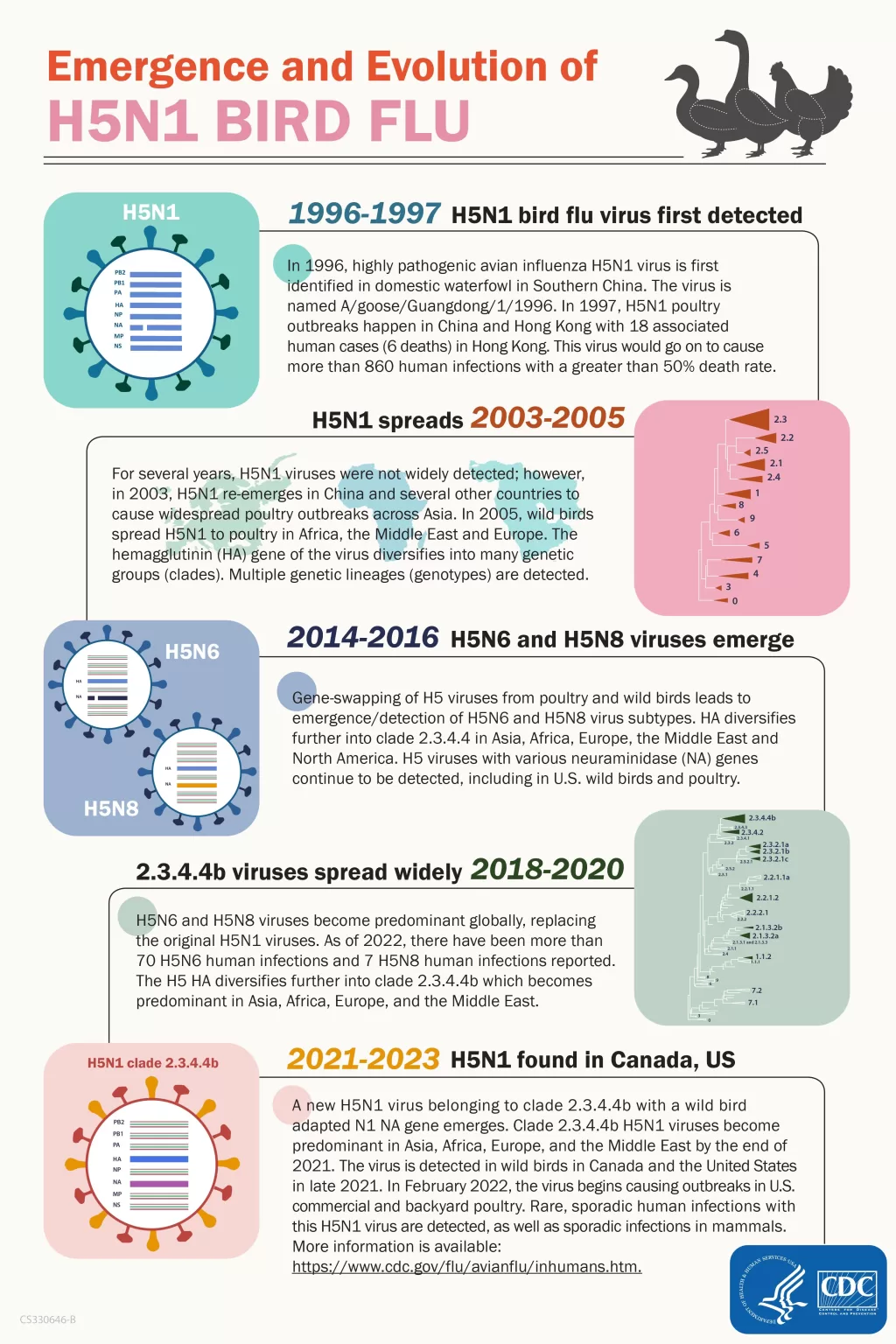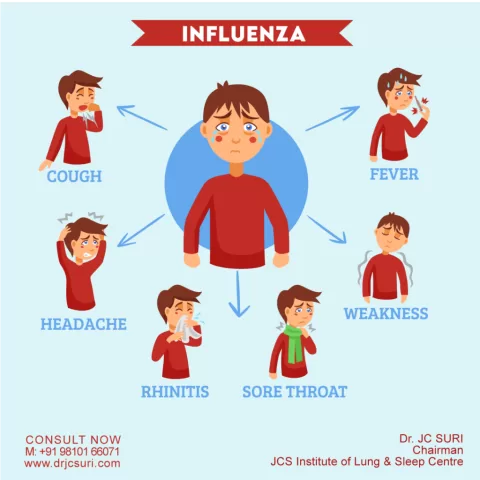The emergence of H5N1 bird flu poses significant concerns not only for avian species but also for public health in general. This highly pathogenic avian influenza has been at the forefront of global discussions since its onset, representing a growing risk of bird flu outbreaks among mammals, including its recent appearance in dairy cows. With the potential for viral transmission risks escalating, H5N1 has evolved into a concerning animal pandemic, garnering attention from health authorities worldwide. As reports of infections spread from birds to livestock continue to surface, it raises alarms about the stability of both the agricultural and human health landscapes. Understanding H5N1 in cows and its implications is critical, given its historical association with severe cases of avian influenza in humans.
The rapid spread of avian influenza known as H5N1 bird flu has sparked a renewed focus on the complexities of this viral threat. Commonly referred to as the bird flu, this virus has caused significant outbreaks in animal populations and has raised fears of potential cross-species infections. The alarming findings of this strain affecting dairy cows, despite being largely considered a poultry virus, challenge prior notions about its host range. With ongoing concerns about animal pandemics and their implications for human health, the need for effective monitoring of viral transmission risks has never been more pressing. This situation highlights the interconnectedness of wildlife, livestock, and human populations in the face of evolving pathogens.
Understanding H5N1 Bird Flu and Its Impact on Animals
H5N1 bird flu, or highly pathogenic avian influenza, has been wreaking havoc in avian populations globally and is now showing its capacity to infect mammals. Primarily associated with birds, this strain of influenza had remained largely contained within avian species until it surprisingly emerged in dairy cows in the Texas Panhandle in early 2024. This alarming development signifies a potential shift in the virus’s behavior, allowing it to spread among mammals, a primary concern given the close interactions between humans and these animals. Experts warn that an animal pandemic, like what we are witnessing with H5N1, could lead to a new sphere of viral transmission risks that threaten both animal health and human safety. The spread of H5N1 indicates that understanding its behavior in diverse species is crucial to preventing unexpected outbreaks in the future.
The implications of H5N1’s transition into mammals like cows point to urgent needs for improved biosecurity measures on farms, better monitoring, and more robust response protocols. Since the detection of H5N1 in Texas dairies, various states have initiated mass testing protocols to identify infected herds swiftly. The emergence of this virus in unintended hosts underlines the complexities of zoonotic diseases and the need for constant vigilance in monitoring wildlife and domestic animals alike to prevent cross-species transmission. Researchers emphasize that historical beliefs about avian influenza being contained only to birds must be revisited as H5N1 continues to surprise scientists with its adaptability.
Frequently Asked Questions
What is H5N1 bird flu and how does it affect animals?
H5N1 bird flu, also known as highly pathogenic avian influenza, primarily infects birds and has recently been detected in a variety of mammals, including cows. This animal pandemic poses significant risks, as it can lead to high mortality rates among poultry and has the potential to spill over to other species, leading to increased concerns about viral transmission.
How did H5N1 bird flu affect dairy cows in Texas?
In early 2024, H5N1 bird flu unexpectedly emerged in dairy cows in the Texas Panhandle, marking the first detection of this virus in cattle. While infected cows typically survive the virus, they experience complications like inflammation in their udders, requiring isolation and quarantine, thus raising fears about further spread in the dairy industry.
What precautions are being taken to combat H5N1 bird flu outbreaks?
To combat H5N1 bird flu outbreaks, especially in poultry and dairy industries, stringent biosecurity measures are being implemented. These include regular testing for H5N1 in animals, culling infected livestock, and advising farmers on reducing contact between domestic and wild animals.
What are the public health risks associated with H5N1 bird flu?
Currently, the public health risk from H5N1 bird flu is considered low, as the virus has not shown the ability to pass easily between humans. However, since 2003, it has infected over 960 people worldwide, with a significant fatality rate, mainly from farms and close-contact environments, indicating the need for continued monitoring.
Can H5N1 bird flu be transmitted from cows to humans?
As of now, there are no confirmed cases of H5N1 bird flu being transmitted from cows to humans in the United States. The virus requires significant mutations to transmit effectively in humans, which has not happened yet; thus, risks remain speculative at this stage.
What is being done to prevent H5N1 transmission during milk production?
The USDA has mandated testing of milk for H5N1 across all 48 contiguous states to ensure food safety. Infected cows are quarantined, and biosecurity practices are being reinforced at dairies to limit the chances of viral transmission during milk production.
How does H5N1 bird flu impact the poultry market?
The ongoing H5N1 bird flu outbreak has significantly disrupted the poultry market, leading to mass culling of chickens and fluctuations in egg prices. The economic impact on this sector emphasizes the need for immediate response measures to control the spread of this animal pandemic.
What are the symptoms of H5N1 bird flu in animals?
Infected animals, such as birds and mammals, often show severe symptoms, including respiratory distress, fever, and in the case of cows, mastitis and changes in milk quality. Wildlife species can also experience high mortality rates, impacting biodiversity.
Why is H5N1 bird flu classified as a panzootic?
H5N1 is classified as a panzootic due to its extensive and widespread impact on various animal species across the globe, causing high mortality rates in birds and spilling over into multiple mammalian species, marking it as a significant animal pandemic.
What are the future implications of H5N1 bird flu for humans?
While the current risk of human transmission from H5N1 bird flu remains low, the potential for evolution and adaptation poses a continuous public health threat. Vigilant monitoring and biosecurity measures are crucial to mitigate the risks of future outbreaks or possible human infections.
| Key Point | Details |
|---|---|
| H5N1 Emergence in Cows | In early 2024, H5N1 bird flu was reported in dairy cows in Texas, surprising experts due to the belief that cows do not contract influenza A viruses. |
| Impact on Industries | The outbreak is causing upheaval in both poultry and dairy industries, leading to fluctuations in egg prices and economic concerns. |
| Public Health Concerns | Despite the spread, experts currently assess the public health risk from H5N1 as low, as the virus has not yet acquired the ability for efficient human-to-human transmission. |
| Genetic Variability | H5N1 can mutate and adapt, posing risks as it continues to infect various hosts. |
| Current Situation for Humans | As of early 2025, there have been no confirmed cases of human-to-human transmission of H5N1 in the U.S., but the potential remains for future spillovers. |
| Environmental Impact | Thousands of wild birds and several mammal species have been impacted across the U.S., indicating a significant effect on wildlife. |
Summary
The recent developments regarding H5N1 bird flu highlight a growing concern as the virus has now affected dairy cows, marking a surprising leap beyond its avian origins. This highlights the ongoing unpredictability of H5N1 and its potential to adapt, representing a significant threat not just to animal health, but also to public health and economic stability. With experts monitoring the situation closely, the situation remains fluid, and continued vigilance is necessary to mitigate the risk of H5N1 spread.
The content provided on this blog (e.g., symptom descriptions, health tips, or general advice) is for informational purposes only and is not a substitute for professional medical advice, diagnosis, or treatment. Always seek the guidance of your physician or other qualified healthcare provider with any questions you may have regarding a medical condition. Never disregard professional medical advice or delay seeking it because of something you have read on this website. If you believe you may have a medical emergency, call your doctor or emergency services immediately. Reliance on any information provided by this blog is solely at your own risk.








